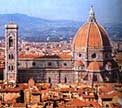
|


|
|
|
Mr. Sedivy's
|
Highlands Ranch High School - Mr. Sedivy
The War Is Over, Now What? The Articles of Confederation
A runaway printer's apprentice, Benjamin Franklin arrived in Philadelphia at age 17 with only one Dutch dollar in his pocket. He became the most prominent printer in the Colonies. For 25 years he published the popular Poor Richard's Almanack that contained wise and witty rules for living. When Franklin found that glasses "proper for reading" were "not the best for greater distances," he combined the two, inventing bifocals. As a contributor to both the Declaration of Independence and the Constitution, Benjamin Franklin helped shape the United States of America. Constitution and the Bill of Rights
"The decorations of the ships, the roar of cannon, and the loud acclamations of the people" impressed George Washington as he was rowed up the East River in New York. Huge crowds greeted their hero, George Washington, all along his route from Mount Vernon (his estate in Virginia) to New York, then the nation's capital.
Why Does the American Revolution Matter?
In the new city of Washington, on Jenkins Hill, a Capitol was built to house Congress and the Supreme Court. Today the hill is called Capitol Hill. The original building is now part of the North Wing, as shown.  A British political cartoon portrays ministers of the king's government about to kill the goose that lays the golden eggs. England dominated commerce with America after the war. The British enforced trade rules that were punishing to the American economy.
A tax was imposed on home-brewed whiskey. Tempers finally exploded in the brief Whiskey Rebellion of 1794. Federal troops quickly snuffed out this first challenge to the governments's power to tax. Colonial America American Colonies: Problems and War in Colonial America The Stamp Act and Sugar Act, The American Revolution The Declaration of Independence The Turning Point of the American Revolution End of the American Revolution - Yorktown / Treaty of Paris Benedict Arnold and His Pal, John André Articles of Confederation, Constitution, the Bill of Rights Historical Periods of | Prehistory
| Mesopotamia & Phoenicians |
|
Highlands Ranch High School ![]() 9375 South Cresthill Lane
9375 South Cresthill Lane ![]() Highlands Ranch, Colorado 80126
Highlands Ranch, Colorado 80126 ![]() 303-471-7000
303-471-7000
Mr. Sedivy's History Classes
| Colorado History | American
Government | Modern European History | Advanced
Placement European History | Rise of England
| World History |
| Home | Back to the top of page
| Site Contents |








